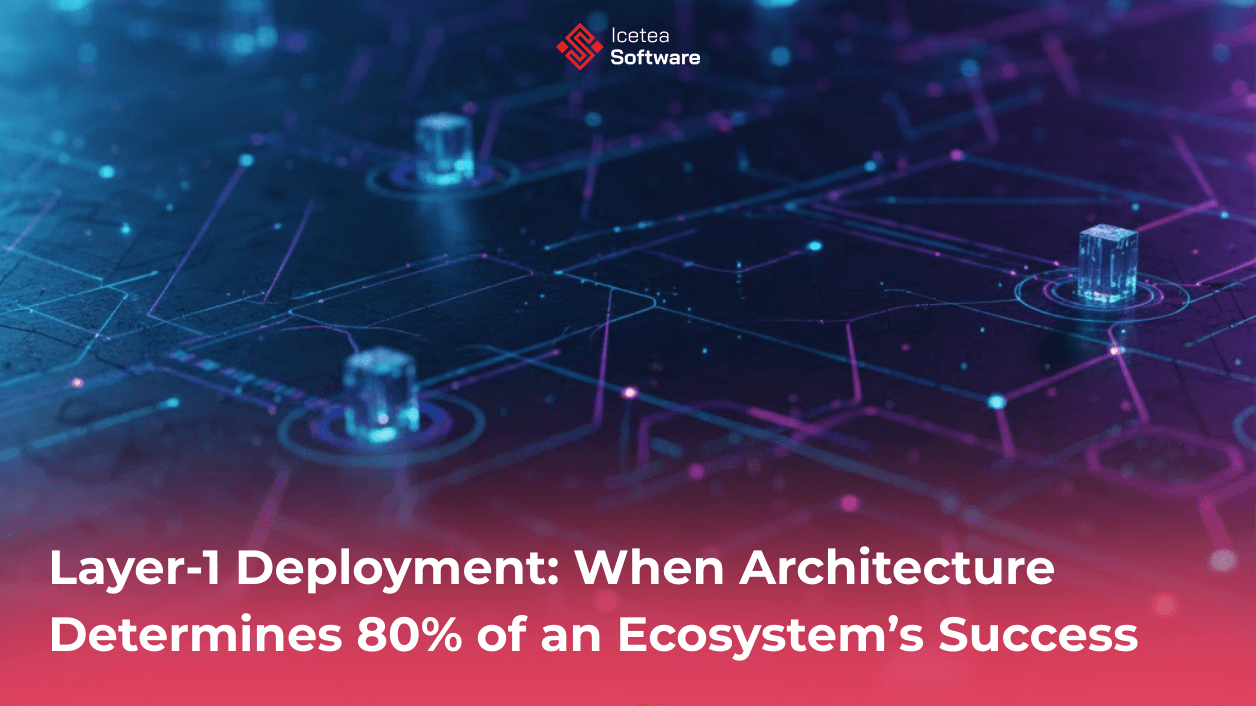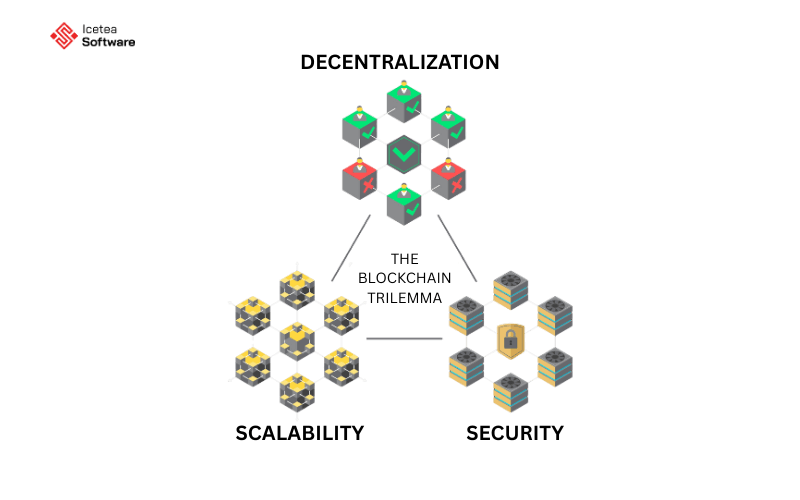Layer-1 Development: When Architecture Determines 80% of an Ecosystem’s Success

A smart Layer-1 Development doesn’t just run, it drives the entire ecosystem forward. Today’s Web3 users and developers no longer accept a blockchain that simply “works.” They expect speed, security, scalability, and a smooth development environment. A “smart” Layer-1 is not just code, it is the foundation that shapes the entire ecosystem, determining whether developers will build on it, users will return, and investors will stay confident.
After years of consulting and implementing blockchain systems, Icetea Software has realized a clear truth: 80% of a Layer-1’s success lies in its architecture. The decisions made during the design phase affect every layer—from consensus and execution to tokenomics and developer experience.
1. The Core Challenge: Solving the Blockchain Trilemma
Every Layer-1 must confront the Blockchain Trilemma: Security, Scalability, and Decentralization. Yet achieving all three at once is extremely rare. Imagine a chain that launches with high TPS but lacks clear finality, or one with too many validators causing network delays. The result? Users leave, developers lose interest, and the ecosystem gets “stuck” from day one.

2. The Contrasts Between Major Architecture Paradigms
Not all Layer-1s are built the same. Their underlying architecture shapes how they scale, operate, and interact with developers.
Monolithic Architecture
Examples: Ethereum, Bitcoin
All core functions (execution, consensus, data availability) happen on a single layer.
- Pros: High security and decentralization
- Cons: Limited scalability
Modular Architecture
Examples: Celestia, Polygon Avail
Functions are separated into specialized layers (DA, Execution, Consensus).
- Pros: Breakthrough scalability thanks to rollups
- Cons: Higher design and interoperability complexity
Parachain / Sharding Architecture
Examples: Polkadot, Near
Uses parallel chains (shards) to handle transactions, secured by a central chain.
- Pros: Balanced security and parallel scalability
- Cons: Complex synchronization between shards/parachains
Icetea Software always emphasizes analyzing use cases before choosing an architecture. A GameFi chain expecting millions of daily transactions should adopt modular design for high throughput. Meanwhile, small DeFi or SocialFi chains may choose monolithic architecture for simplicity, faster development, and easier auditing.
3. Why Choosing the Right Execution Environment Matters
The Virtual Machine (VM) is the heart of every Layer-1. Your VM choice directly impacts developer experience, dApp compatibility, and system performance:
- EVM: Massive developer base, mature tools, extensive libraries
- WASM: Multi-language support, high performance, ideal for intensive workloads
- Multi-VM (EVM + WASM): Balance of usability and performance; ideal for chains targeting both developer adoption and high throughput

Choosing the wrong VM can lead to massive maintenance costs, capped throughput, and difficulty attracting developers later.
4. Tokenomics Must Fit the Architecture
A strong Layer-1 is not merely fast, it requires tokenomics aligned with consensus, throughput, and storage costs.
A well-designed model ensures:
- Stable validator operations
- Meaningful incentives for developers
- Smooth and affordable user experience
5. Architecture Defines the Entire Ecosystem
A smart Layer-1 doesn’t just run, it drives ecosystem growth. When validators operate reliably, developers have strong tooling, and users enjoy smooth performance, the network becomes self-sustaining and naturally attracts more dApps. Architecting a Layer-1 is not just about writing code; it is about defining the technical framework that thousands of future dApps will rely on.
Conclusion
Today’s users and developers expect more than a blockchain that simply operates. They demand speed, security, scalability, and developer-friendliness. Businesses that understand Layer-1 architecture early, balance the trilemma, and design correctly from the start will gain long-term advantages. At Icetea Software, we transform the vision of a powerful Layer-1 into a real, production-ready system from core architecture to ecosystem tooling, from consensus to developer experience.
If you are imagining a robust, scalable, developer-friendly Layer-1, now is the time to begin.
————————————————————————
Icetea Software – Blockchain Layer-1 Development
Website: iceteasoftware.com
Linkedin: https://www.linkedin.com/company/iceteasoftware/
Facebook: https://www.facebook.com/IceteaSoftware/
Twitter: https://x.com/Icetea_software







